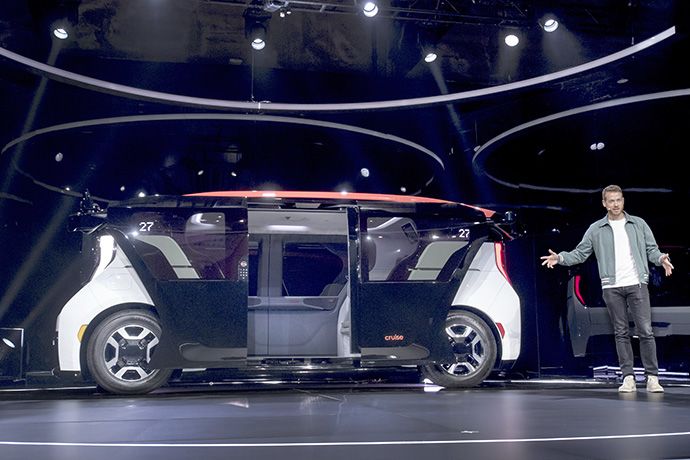Most major manufacturers are reluctant to put all their autonomy eggs in one basket.
(Bloomberg) —
In BloombergNEF’s latest road transport outlook report, we see autonomous vehicles accounting for roughly 8% of the kilometers that passenger vehicles travel by 2040.
There’s a great deal of uncertainty in the pace of technological development in this industry, so it’s easy to find predictions that this number will be far higher or lower. But this much is certain: charting the share of kilometers driven by self-driving vehicles in the future involves drawing a line going up and to the right.
The general belief in this trend — and perhaps a healthy dose of FOMO — has helped spur more than $53 billion of investment in private autonomous-vehicle technology companies since 2014. Automakers have played an important role in determining how that capital has been allocated. They’ve invested directly through their corporate venture funds and M&A departments and have ascribed credibility to self-driving vehicle startups that need vehicles to develop their technology.
As part of our work tracking self-driving vehicle developments, we maintain a database of external investments, joint ventures, partnerships and other moves by the world’s largest automakers. The most obvious takeaway from mapping out these activities is that, for the majority of major manufacturers, there’s a reluctance to put all their self-driving eggs in one basket.
Spreading out investment and partnerships across multiple companies isn’t a guarantee of success, but many investors will tell you it does improve the odds. In addition to diverse-portfolio theory, there are other reasons automakers would want to hedge their bets.
Many self-driving companies test and develop their technology in cars but also have their eyes on other prizes. Self-driving delivery company Nuro, which last week announced a partnership with Uber, tested early iterations of its software in cars while awaiting federal approval for its custom delivery vehicle to be allowed on public roads.
Diversity in self-driving applications and business models — be it robotaxis, autonomous trucks, delivery robots or more niche vehicles like street sweepers and garbage trucks — could be a way to ensure that even if you as an investor pick a company that doesn’t end up with the best tech, at least they have an early start in a specific revenue-generating activity.
Another reason to spread out wagers on autonomous driving is geography. In some respects, regional differences are becoming less of a hindrance. The General Motors-backed startup Cruise, for example, announced plans this week to quickly expand into new areas, deploying its vehicles in Phoenix and Austin, Texas. The company expects to be able to arrive in a new city, record 3D maps and begin offering driverless rides to passengers, all within 90 days. If Cruise is able to achieve this goal, it’ll be a significant development for the industry and a powerful demonstration of how self-driving technology could scale.
Geography remains a roadblock in other ways. Some regions are increasingly reluctant to allow self-driving companies to share data they capture in one area with developers in another. This trend is prevalent in our automaker corporate strategy database, with many automakers making significant investments in western self-driving companies and separate investment in companies based in China.
As with any developing industry, not every company will be successful and there will likely be a lot of consolidation in the self-driving industry. However, across specific applications, geographies and business models, there will be many winners, and the global automotive giants want a piece of it all.
More stories like this are available on bloomberg.com
©2022 Bloomberg L.P.











